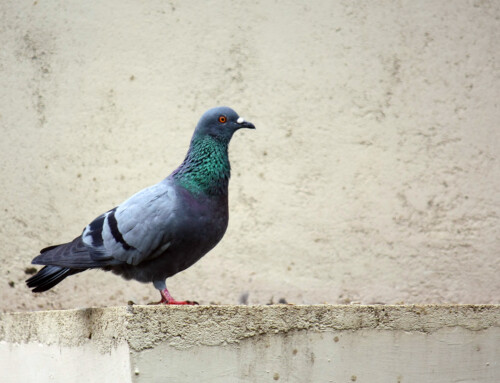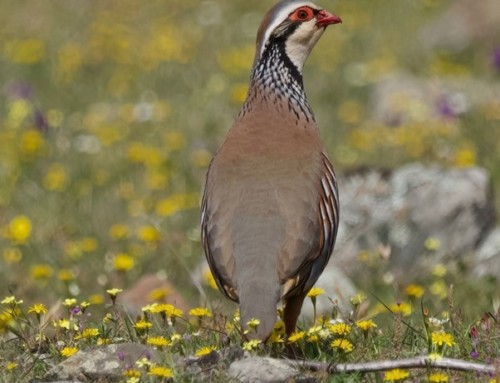A ‘peer-reviewed’ website gathering the bulk of scientific literature on avian hybridization
LINKED PAPER
The Avian Hybrids Project: gathering the scientific literature on avian hybridization. Ottenburghs, J., Ydenberg, R.C., Van Hooft, P., Van Wieren, S.E. & Prins, H.H.T. 2015.
IBIS 157: 892-894. DOI: 10.1111/ibi.12285. View
A cold and misty morning in December. Three men are waiting on the edge of a grassland for the mist to disappear. A few minutes later, a noisy symphony of honking fills the air. Thousands of geese waddle across the grassland. The men immediately grab their binoculars and start scanning the flocks for rare species. Suddenly, one of the birdwatchers starts mumbling: ‘What kind of …?’ He expertly guides his friends’ binoculars towards an abnormal specimen in a group of Greater White-fronted Geese Anser albifrons. What species are we dealing with? Bird guides are consulted, but they do not provide an outcome. Finally, one of the birdwatchers proposes a controversial idea, could it be a hybrid? It has characteristics of Greater White-fronted Goose and Barnacle Goose Branta leucopsis. After a short re-examination of the special goose, they agree. They are dealing with Greater White-fronted Goose x Barnacle Goose. The mystery is solved and they continue scanning the flocks in search of rare species.

© Dave Appleton.
This short story indicates the way birdwatchers usually deal with hybrids: they notice them, sometimes report them, but mostly discard them as non-important and continue their quest for more interesting birds. Hybridization is seen as ‘mistake’ in nature. Individuals have chosen the ‘wrong’ partner and the resulting hybrids, or bastards, have no future. For a long time, this view was also held by scientists. For instance, in Animal Species and Evolution (1963), the German ornithologist Ernst Mayr writes that ‘available evidence contradicts the assumption that hybridization plays a major evolutionary role.’
Despite the idea that hybridization is just an evolutionary footnote, ornithologists continued to study hybrids, specifically in the context of hybrid zones. In Europe, Wilhelm Meise (1928) wrote his PhD dissertation on hybridization between Carrion Crow Corvus corone and Hooded Crow C. cornix, under the supervision of Erwin Stresemann. On the other side of the Atlantic, Charles G. Sibley and his students pioneered the study of avian hybrid zones. They mapped the geographical distribution of several species pairs and their hybrids such as Passerina Buntings (Sibley and Short 1959) and Pipilo Towhees (Sibley and West 1959). These hybrid zones are still being studied today (Carling and Zuckerberg 2011, Curry and Patten 2014).

The study of these hybrid zones and the advent of new molecular techniques overturned the sceptical position towards hybridization. A paper that can be regarded as a turning-point is “Hybridization as a Source of Variation for Adaptation to New Environments” by Richard Lewontin and Louis Charles Birch (1966). They showed that the exchange of genetic material (DNA) between the fruit flies Drosophila neohumeralis and D. tryoni could provide genetic variability for adaptation to an extreme environment. Consequent research uncovered many hidden benefits of hybridization, such as the origin of new species (Mavarez and Linares 2008, Schumer, Rosenthal et al. 2014) and the transfer of adaptive traits between species (Arnold 2006, Hedrick 2013).
Currently, there is an enormous amount of scientific literature dealing with avian hybridization, ranging from early reports of hybrids and classical hybrid zones studies to modern molecular analyses. Finding your way in this mountain of scientific writings can be challenging to say the least. That is why I decided to gather the bulk of this literature on a website (https://avianhybrids.wordpress.com), arranged by Order (and on a Family level for the Passeriformes). The most important goal of this website is to provide a standardized resource on the current state of knowledge on avian hybridization that is accessible for scientists as well as laypersons. To safeguard the quality of the content, all texts will be peer-reviewed by experts in certain bird groups. For instance, Peter and Rosemary Grant (Darwin’s Finches), Hans Ellegren (Flycatchers) and Grzegorz Neubauer (Gulls) have already read and approved the texts written about their respective study subjects.
To my knowledge, this is the first ‘peer-reviewed’ website on the worldwide web. Apart from a scientific resource, this website will hopefully encourage birdwatchers to pay more attention to hybrids in the field. So, if you’re working on or interested in bird hybrids, please get in touch! Who knows, future bird guides might contain an extra section on avian hybrids.
References and further reading
Arnold, M. L. (2006). Evolution through genetic exchange. Oxford, Oxford University Press.
Carling, M. D. & Zuckerberg, B. (2011) Spatio-temporal changes in the genetic structure of the Passerina bunting hybrid zone. Molecular Ecology 20: 1166-1175. View.
Curry, C. M. & Patten, M. A. (2014) Current and Historical Extent of Phenotypic Variation in the Tufted and Black-crested Titmouse (Paridae) Hybrid Zone in the Southern Great Plains. American Midland Naturalist 171: 271-300. View.
Hedrick, P. W. (2013) Adaptive introgression in animals: examples and comparison to new mutation and standing variation as sources of adaptive variation. Molecular Ecology 22: 4606-4618. View.
Lewontin, R. C. & Birch, L. C. (1966) Hybridization as a Source of Variation for Adaptation to New Environments. Evolution 20: 315-336.
Mavarez, J. & Linares, M. (2008) Homoploid hybrid speciation in animals. Molecular Ecology 17: 4181-4185. View.
Mayr, E. (1963). Animal species and evolution. Cambridge, Belknap Press of Harvard University Press.
Meise, W. (1928). Die Verbreitung der Aaskrähe (Formenkreis Corvus corone L.), Dornblüth.
Schumer, M., G. G. Rosenthal & Andolfatto, P. (2014) How common is homoploid hybrid speciation? Evolutio(6)n 68: 1553-1560. View.
Sibley, C. G. & Short, L. L. (1959) Hybridization in the buntings (Passerina) of the Great Plains. The Auk 76: 443-463. View.
Sibley, C. G. & West, D. A. (1959) Hybridization in the Rufous-sided Towhees of the Great Plains. The Auk 76: 326-338. View.
Image credits
Top: A Swoose – a hybrid between a swan and a goose (in this instance a Mute Swan x Greylag Goose) © Dave Appleton
If you want to write about your research in #theBOUblog, then please see here.





